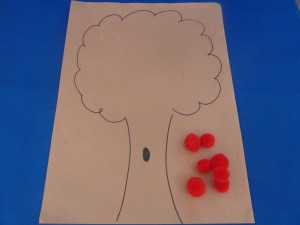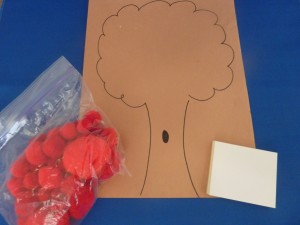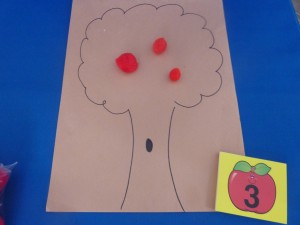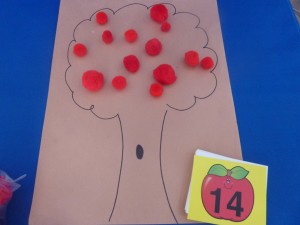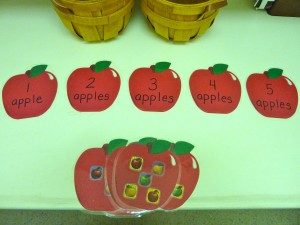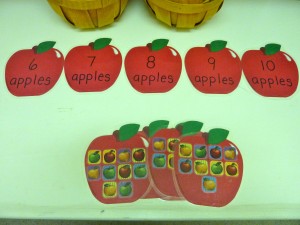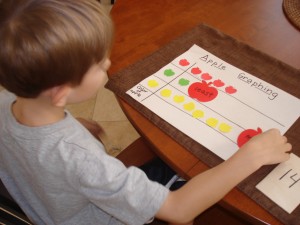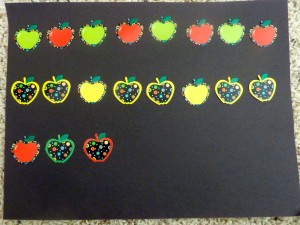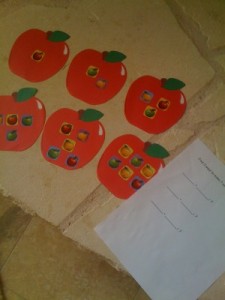I created this Crawl and Match activity because I wanted Andrew to begin understanding what tally marks were, how they were written and how to count them. The Crawl and Match concept can be used to reinforce a wide variety of skills and concepts, this is just one example of how I did it to build a specific math concept.
Other Concept Examples To Use With Crawl and Match:
- letter matching (uppercase and lowercase)
- word and picture matching (this would even be a cute way to match up classmates pictures and names)
- color and color word or item matching
- shape and shape word or item matching
- beginning sound matching
- ending sound matching
- rhyming word matching
- opposite word matching
- number and number word matching
- coins and their value matching
- math fact and sum/difference/product/quotient matching
- state and capital matching
My Obstacle Course Station Activity: Tally Mark Crawl and Match
I used a package of apple-shaped calendar cutouts and wrote the regular numbers on half of the cutouts and wrote the corresponding tally marks on the other half. I explained to him that each tally mark represented “1” and every fifth mark went diagonally across the other 4.

He would choose an apple with tally marks on it…

and crawl down to match them with the apple that had the correct number. Crawling requires cross patterning of the body (moving one side along with the other – like using right arm and left leg and then left arm and right leg to crawl forward) which activates both sides of the brain during this learning process – pretty cool, huh! 🙂

I really like reinforcing concepts like this because it is physical work for him while building an academic skill. The distance between the items to match gives him time to process the information on his way down to make his choice.
Engage, Encourage and Empower!


